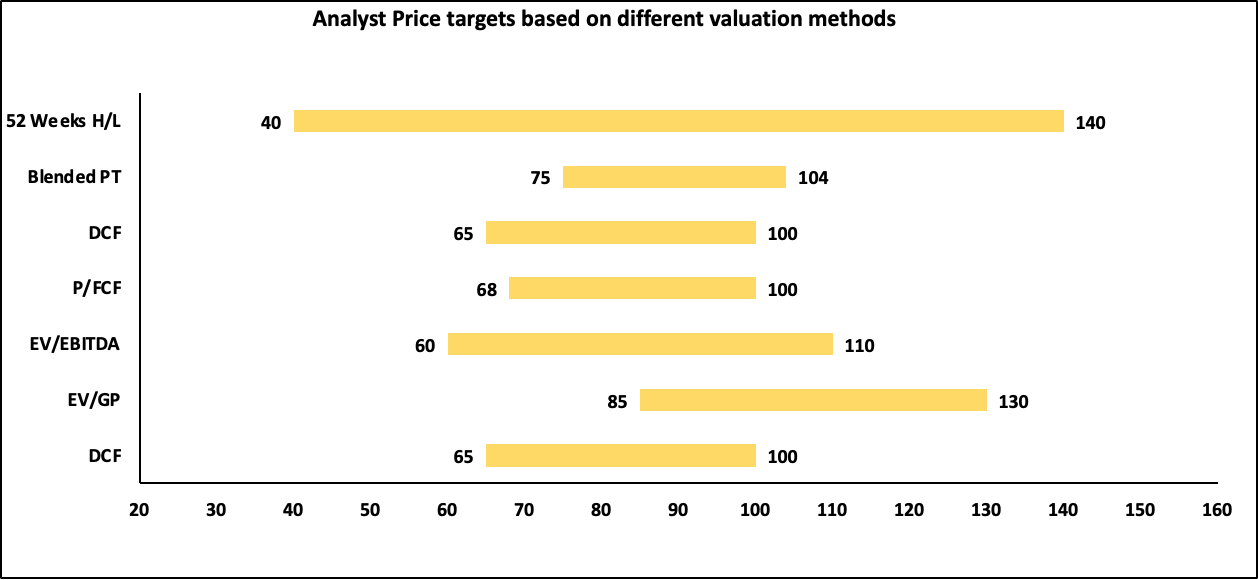Valuation Dissonance: The IR Tightrope
Let’s talk about the stock market’s favorite pastime: getting your company’s value wrong. If you’re on an IR (Investor Relations) team, you’re not just a messenger, you’re the translator between your company’s reality and the market’s fever dreams.
The Stock Price Mirage
Here’s the thing: your stock price is a mood ring, not a mirror. It’s supposed to reflect what your company’s worth, but more often it just reflects what people think you’re worth after a few too many cups of coffee and a quick scan of your last earnings call.
Market value? That’s just the stock price times the number of shares—simple math, but behind it is a swirling mess of trust, hope, skepticism, and sometimes, pure speculation. Your job is to keep that number tethered to reality, or at least to something resembling it.
Living at the Extremes
Some companies are the teacher’s pet—trading at the high end of the industry’s valuation range. Others are the class outcast, stuck at the bottom. Why? Maybe investors trust your management, maybe they believe in your growth story, or maybe they just like your logo. The point is, if you’re at the extremes, the stakes are higher. One slip, one missed quarter, and the market’s love (or loathing) can turn on a dime.
When the Street Brings the Wrong Ruler
Here’s where things get weird: the metrics that matter change as your company grows up. Early on, it’s all about revenue—“Look how fast we’re growing!” Later, it’s EBITDA, and eventually, the grown-ups in the room start talking P/E ratios. But if analysts are measuring you with the wrong ruler, chaos ensues. Suddenly, you’re being judged on profitability when you’re still in growth mode, or vice versa.
Chasing Dissonance: How to Keep the Market in Tune
So how do you keep the market from playing the wrong song?
Watch the Estimates: Keep an eye on what analysts are saying—not just about you, but about your peers. What metrics are they obsessed with this quarter? Are you being compared to the right companies, at the right stage?
Tell Your Story (Loudly): Don’t let the market fill in the blanks. If your key metric is temporarily off (seasonality, anyone?), get ahead of it. Explain, contextualize, repeat.
Spot the Dissonance Early: If you see a gap between how you think you should be valued and how the market is actually valuing you, don’t ignore it. That’s your cue to step in and recalibrate expectations, before the price chart turns into a rollercoaster.
Build Trust, Not Hype: The market can smell spin a mile away. Be transparent, be real. Investors reward companies that tell it straight—even when the news isn’t perfect.
The Bottom Line
Valuation isn’t just about numbers—it’s about narrative, trust, and timing. If you’re in IR, you’re not just managing information. You’re managing dissonance, trying to keep the market’s story about your company as close to reality as possible. And when the music gets out of tune? That’s your chance to step up, set the tempo, and get everyone playing in harmony again.
Because in the end, chasing dissonance isn’t about eliminating it—it’s about knowing when to lean in, and when to bring the market back in key.
Our analyst team and AI tools at Virtua Research honed over 15 years of working with IR teams can help monitor and manage this process for you.
What’s Next?
Next week, we’re peeling back another layer of risk—because if you think valuation is complicated, wait till you see what’s lurking underneath. But for now, if something here doesn’t sit right, or if you’re wrestling with your own IR headaches, don’t be shy. Reach out, drop a comment, start the conversation. This is just the opening act.



